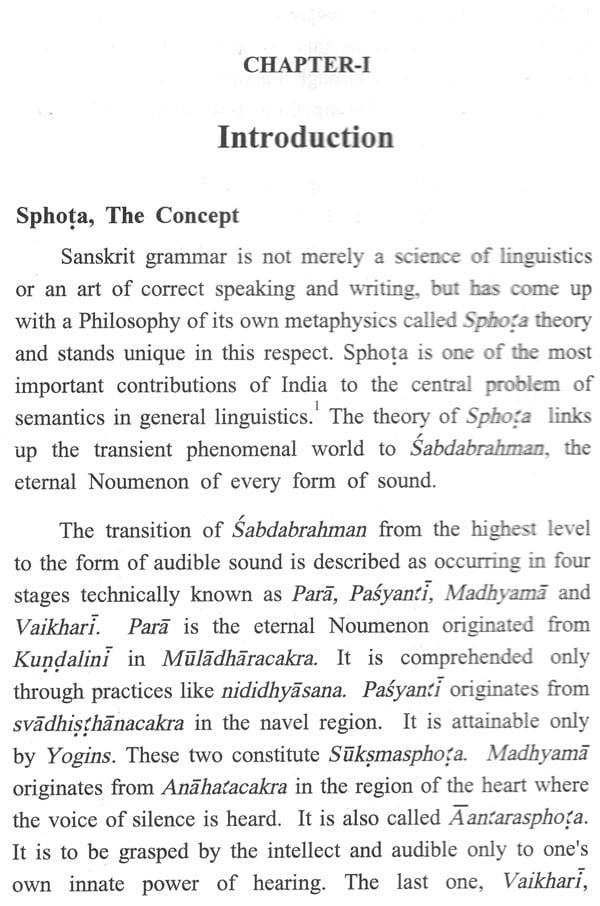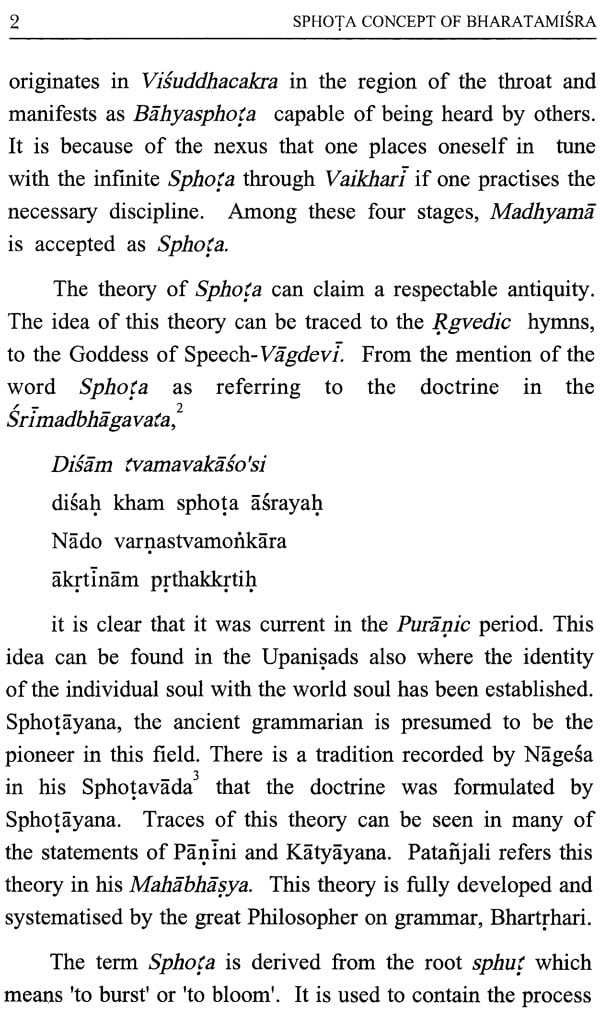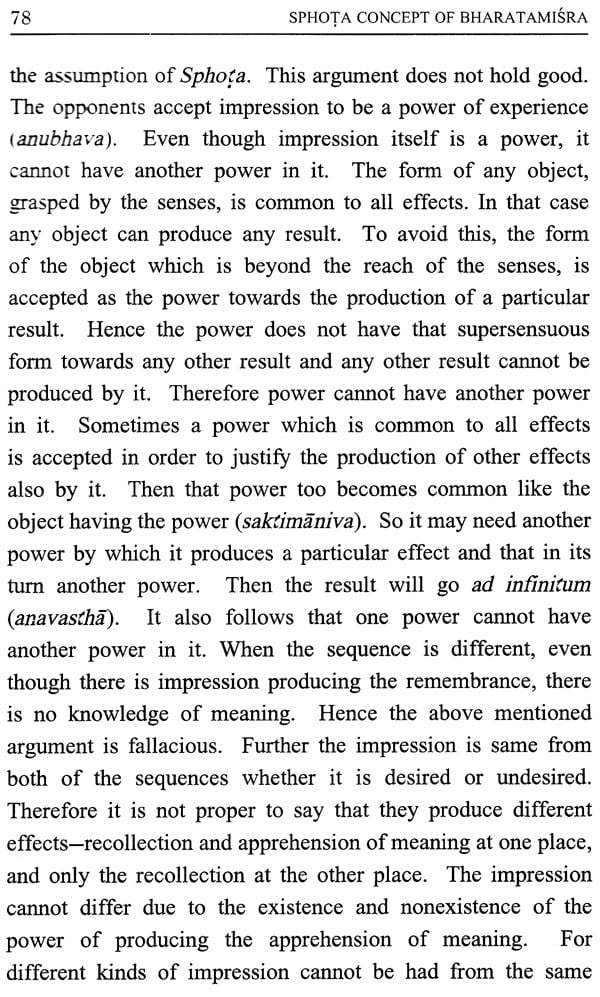Foreword The relationship of word and meaning has been seriously studied by several linguists and philosophers. The earliest speculations in this connection can be traced to ancient Sanskrit grammarians and different scholars of Indian philosophy. The psychological process involved in the utterance of the speaker as well as in the comprehension of its idea by a hearer is much complicated. This complication is evident in the discussion that follows the question "What is the word in 'cow'?" in the Mahabhasya. There it has been concluded that the signifier (Aabda, i.e., the phase of the word which exposes the object or idea in the mind of the heater) is an intellectual (Bauddha) thing. That intellectual or psychological thing was named Sphota and it is traditionally believed that the Rsi who first theorized it came to be known as Sphotayana.
The function of the brain in the process of conceiving an idea and conveying it in speech is very important. Sages of the Upanisads understood that Buddhi (intellect) has its seat in the brain. They realized that when a word is uttered it makes an impression in the brain so that when the word is pronounced at a later time it is identified. Similarly, an object perceived by sense organs also leaves an impression in the brain. Once the sound impression and the object-impression are connected by reference, for instance, pronouncing a name by pointing to an object seen, an identification of the two impressions in the brain is established. Later when that name is uttered, the sound arouses or enlightens the impression in the hearer and he immediately understands the object. This impression, or molecule in brain is Sphota.
Preface The theory of Sphota is a unique achievement of Indian grammarians and as such it forms India's outstanding contribution to the Philosophy of language. Though the roots of this theory can be traced to the Rgvedic hymns, its traditional formulator is taken to be sage Sphotayana. As developed by grammarians like Bhartrhari, the theory of Sphota links up the transcient phenomenal world to sabdabrahma, the eternal Noumenon of every form of sound. The Sphota siddhi of Bharatamisra makes an earnest attempt to sum up the Sphota doctrine of these grammarians. It establishes the eternal word-principle transcending letters or sounds within the compass of three Paricchedas (chapters), viz., Pratyaksa (Perception), Arthapatti (Presumption) and Agama (Verbal Testimony). The Doctrine of Sphota, enunciated by the ancient grammarians, is further established in this work arranging the thought in a convincing fashion and that too in a style lucid and dignified rendering the title of the work literally true. The present work "Sphota Concept of Bharatamisra" gives a clear idea of the Sphota principle and the establishment of Sphota in Sphotasiddhi.
The work entitled "Sphota Concept of Bharatamisra" represents the work I did as a research student in the Department of Sanskrit, University of Kerala, under the guidance of Dr. K. Vijayan. My attempt in the main remains the study of the topics in connection with the establishment of the theory of Sphota dealt with in Sphota siddhi of Bharatamisra and his concept of Sphota. The work consists of five chapters.
Book's Contents and Sample Pages




















